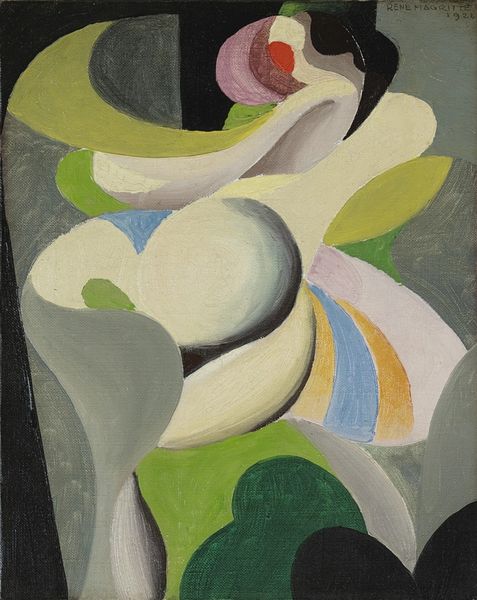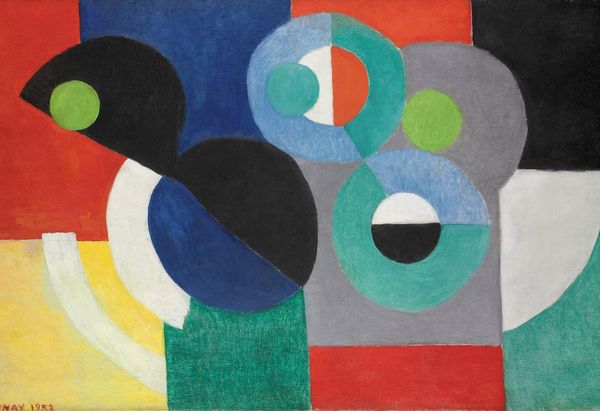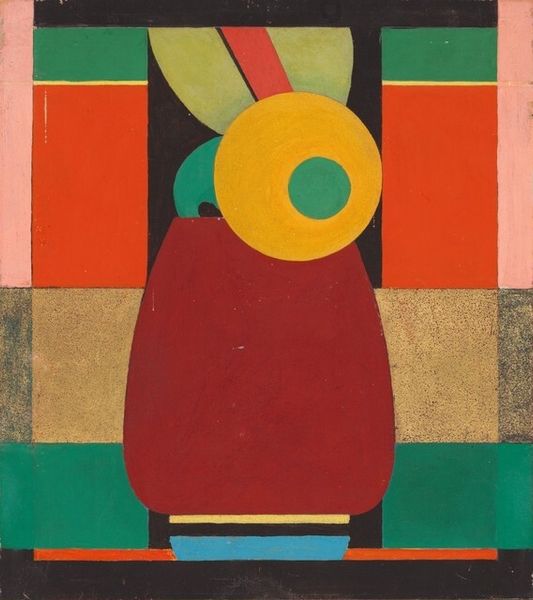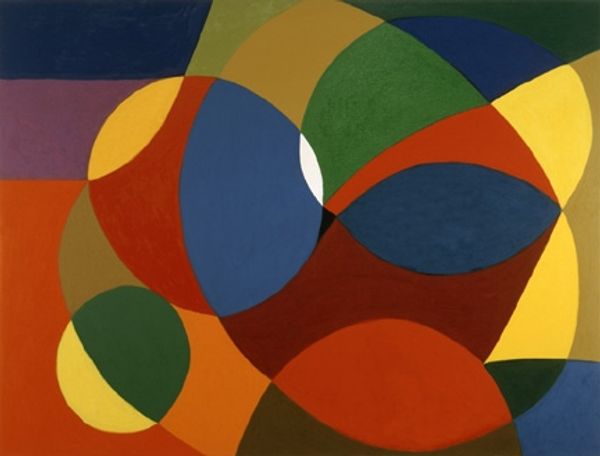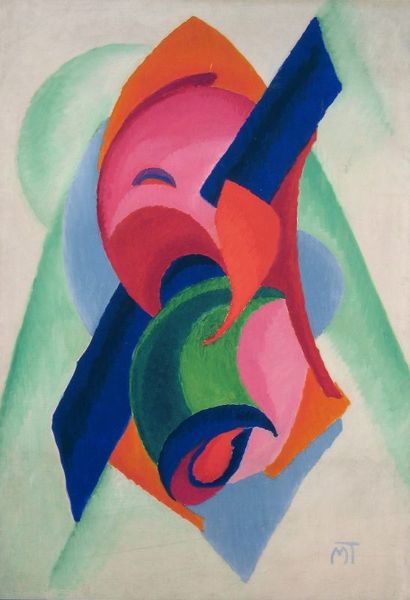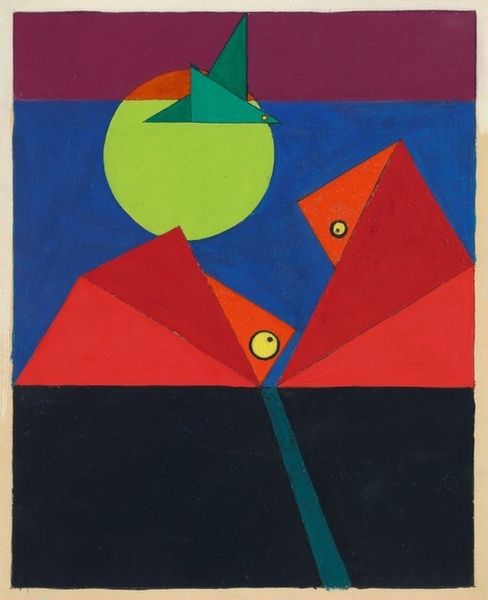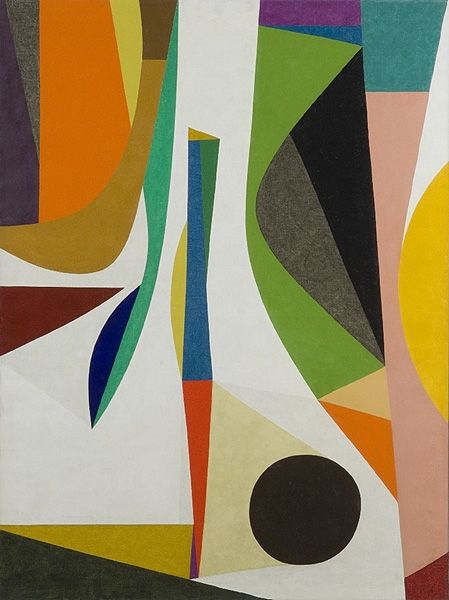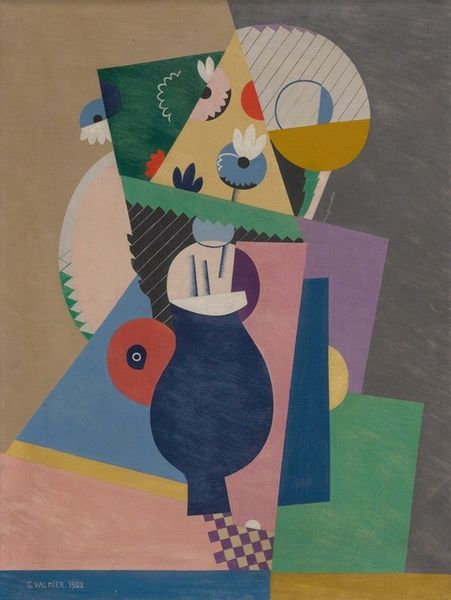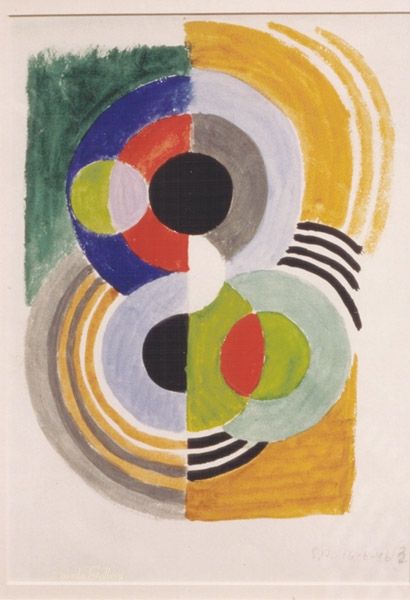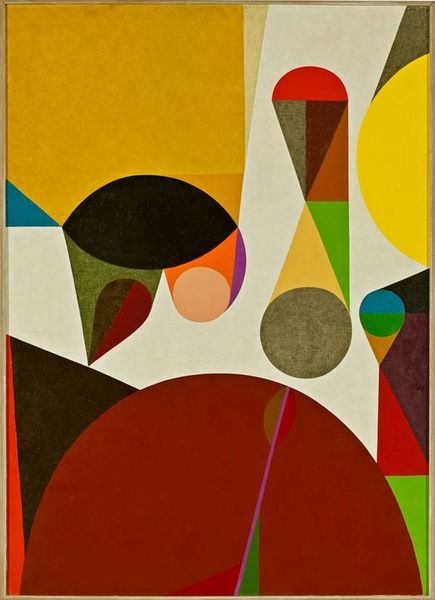
painting
#
cubism
#
painting
#
geometric
#
abstraction
#
modernism
Dimensions: overall: 92.1 x 81.9 cm (36 1/4 x 32 1/4 in.) framed: 95.9 x 85.9 x 2.4 cm (37 3/4 x 33 13/16 x 15/16 in.)
Copyright: National Gallery of Art: CC0 1.0
Curator: This is Edward Steichen's "Le Tournesol," or "The Sunflower," painted around 1920. It exemplifies Steichen's shift toward a modern, cubist style. Editor: My initial impression is its striking use of geometric shapes and vivid, almost childlike colors. The composition feels both playful and strangely monumental, despite its relatively modest scale. Curator: Indeed. Examining this canvas further, we can appreciate the materiality of Steichen's method. He employs these deliberately flat planes of color and bold lines to deconstruct and reconstruct our understanding of the sunflower, of "flower" itself as a historical cultural symbol. Editor: Absolutely. The choice of oil on canvas lends a certain texture that plays beautifully with the hard-edged forms. It disrupts any illusionism. One could examine the very substance and availability of these paints in a Post-War context to unpack how Steichen saw the world, the very "stuff" of art, in this period. Curator: Consider, too, the socio-political climate during this period. Abstraction allowed artists to express the complexities of modernity without being directly representational. Post-war anxieties, technological advancements, and shifting social norms influenced the departure from traditional art forms. It is difficult, if not impossible, to disassociate this formal aesthetic from its historical setting, including how gender was conceived and embodied by Steichen in relation to other modern male artists. Editor: Yes, the context is crucial. The very act of painting, the physical labor, becomes paramount here. One can analyze this composition through its individual material components – the canvas, the pigments – understanding how they were produced, distributed, and consumed. It begs the question, does this sunflower embody something distinct or different? Curator: Perhaps Steichen also critiques art’s capacity to embody the human form; he emphasizes, as one lens, the deconstruction of natural, “ideal” forms, thus commenting on social values in a subtle manner. Editor: In that way, it truly pushes the boundaries of what we consider “fine art.” Thanks for illuminating those critical aspects. Curator: Of course. Thinking of Steichen now, it is so relevant how he utilized painting to interrogate cultural issues; it adds profound depth to this abstracted flower.
Comments
No comments
Be the first to comment and join the conversation on the ultimate creative platform.
